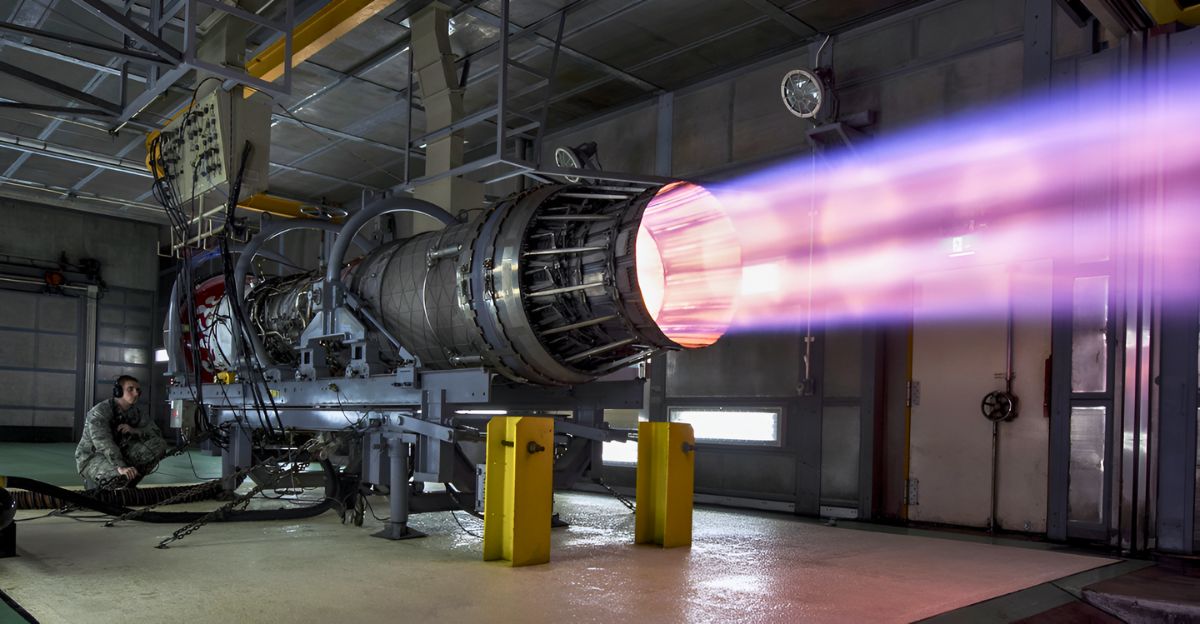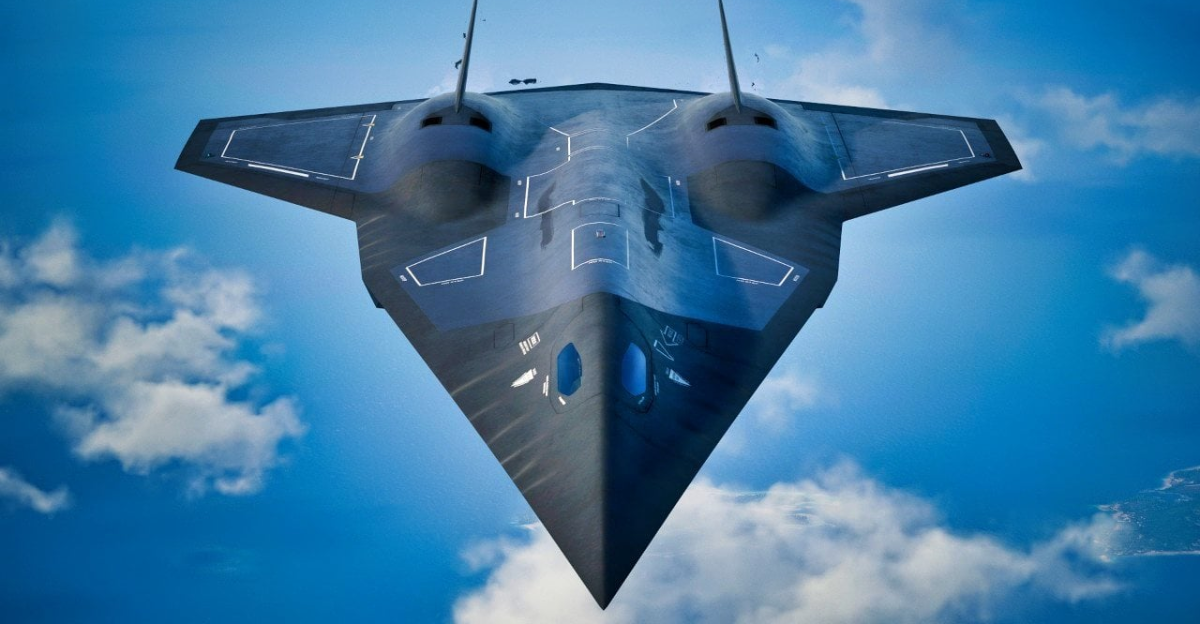
With the successful flight test of a Rotating Detonation Rocket Engine (RDRE) by Venus Aerospace, the United States has accomplished a significant milestone in hypersonic propulsion. This next-generation engine, which has been theorized since the 1980s, provides previously unheard-of thrust and efficiency, allowing cars to leave conventional runways and reach speeds of Mach 4 to Mach 6. The RDRE promises both defense and commercial applications because it is small, inexpensive, and scalable in contrast to conventional rocket engines.
The success of the RDRE also marks a change in the paradigm of innovation, with private firms like Venus Aerospace speeding up discoveries that were previously the sole domain of government organizations. The democratization of the development of hypersonic technology may accelerate deployment cycles and make global monitoring and control initiatives more challenging.
The Race for Hypersonic Arms

The desire for aircraft and missiles that could surpass Mach 5 sparked the quest for hypersonic flight in the middle of the 20th century. The groundwork was established by early US research, but practical deployment was delayed by technical challenges. Since then, China, Russia, and the US have taken the lead in the race to deploy functional hypersonic vehicles and weapons.
In the past, military innovation has been predicted by hypersonic technology, which frequently indicates changes in geopolitical power. Similar advances in missile technology during the Cold War era necessitated the development of new defense and deterrence doctrines. The hypersonic race of today is arguably more complicated, taking into account commercial, dual-use, and military factors.
Technological Advancement

The Significance of RDRE A long-theorized but elusive rocket propulsion goal, pressure gain combustion is what makes the RDRE significant. The RDRE is more compact and fuel-efficient than traditional engines because it generates thrust through continuous detonation waves. Without the use of large boosters or unusual fuels, this design allows for sustained hypersonic speeds.
The engine’s quick detonation wave cycling results in more accurate thrust control, improving maneuverability at hypersonic speeds, a revolutionary development for both commercial and combat aviation. The innovation also creates opportunities for hybrid propulsion systems, which combine conventional turbojets and RDREs to provide adaptable performance in a variety of flight conditions.
China’s Reaction: Innovation in Oblique Detonation Engines

China promptly announced its own success with an Oblique Detonation Engine (ODE), a concept first put forth by US researchers in 1958 but never scaled up, in response to the US breakthrough. Chinese teams used regular aviation kerosene to sustain detonation waves at Mach 8 in May 2025, a feat that reflects both technical skill and strategic intent.
China’s larger strategy of using domestic innovation to attain technological parity or superiority in crucial military domains is reflected in this development. Although the ODE’s design is more straightforward than the RDRE’s, it has complementary benefits, especially when it comes to thermal control and structural longevity at high speeds. The psychological impact of China’s announcement is also significant, as it challenges US dominance and strengthens its narrative of technological superiority.
The Global Domino Effect: Market Expansion and Proliferation

A global race to achieve hypersonic capabilities has been sparked by developments in the US and China. The market for hypersonic weapons, estimated at $7.6 million in 2024, is expected to grow to $12 million by 2030, with China leading the way with an annual growth rate of 12.1%. Countries like Japan, Australia, and India are making significant investments in hypersonic research, in addition to the US, Russia, and China.
With new competitors using hypersonic propulsion to create cutting-edge satellites, quick worldwide delivery systems, and next-generation military platforms, the global aerospace sector is about to undergo a revolution. Concerns about destabilizing arms races in areas with high geopolitical tensions, such as the Middle East and the Indo-Pacific, are also raised by this proliferation.
Strategic Risk: The Decline of Deterrence

The speed and agility of hypersonic weapons make conventional missile defenses essentially obsolete, speeding up reaction times and raising the possibility of error. While improving national capabilities, the US discovery also ushers in a new era of vulnerability for all of the world’s superpowers. The likelihood of unintentional or preemptive conflict increases as more actors obtain hypersonic technology.
Long-standing nuclear doctrines may become unstable as a result of this deterioration of deterrence stability, which may also lead to the creation of new, potentially unstable weaponry. Furthermore, the ability of hypersonic weapons to avoid detection and interception poses a strategic conundrum: while a significant investment in countermeasures could take resources away from other vital defense areas, a failure to react could result in strategic surprise.
Unexpected Repercussions: Commercial and Civilian Upheaval

The RDRE’s affordability and scalability make it possible for civilian applications that were previously only found in science fiction. According to Venus Aerospace, a passenger plane could travel from Los Angeles to Tokyo in less than two hours. If this comes to pass, it could upset global supply chains, travel, and logistics, with repercussions for everything from the travel and pharmaceutical industries.
Other difficulties include the effects on the environment, such as noise pollution and excessive fuel use at hypersonic speeds. Additionally, significant infrastructure improvements and international coordination are required for the integration of hypersonic vehicles into current air traffic control systems. In addition to accelerating innovation in avionics, propulsion, and materials science, the commercialization of hypersonic technology may have positive ripple effects on other industries.
Hypersonic Excitation vs Actuality

There are still major operational and engineering obstacles in spite of the technological hype. For instance, China’s ODE test had exhaust area instability and only 39% fuel efficiency. Before being widely used, both Chinese and US systems need to be improved. The strategic significance of hypersonic weapons, according to skeptics, may be exaggerated because new defense paradigms and countermeasures might be developed.
The emphasis on speed could obscure other essential aspects like accuracy, range, and payload capacity. Hypersonic weapons, according to some analysts, might incite arms races without providing clear battlefield advantages, resulting in strategic instability rather than security. However, the psychological and political ramifications of hypersonic breakthroughs are indisputable, impacting defense postures and international diplomacy, even if operational deployment timelines are prolonged.
Effects at the Second and Third Orders: Changes in Strategy, Economics, and Psychology

A series of strategic, economic, and psychological changes have been sparked by the US hypersonic breakthrough, which is more than just a technical achievement. Alliances and defense procurement may change if allies demand access to US technology. Asymmetric reactions, like cyber or space-based countermeasures, may be accelerated by adversaries. The idea that the US is technologically superior could either discourage aggression or lead to frantic attempts to catch up.
In terms of the economy, hypersonic technology has the potential to disrupt current sectors that depend on slower transportation while promoting new ones, such as advanced manufacturing and specialized fuels. In terms of psychology, the sense of invincibility that hypersonics convey may give policymakers more courage and increase their risk tolerance during global emergencies.
The New Order of Hypersonic

China and other nations are vying to match or outperform the United States in the wake of its breakthrough in hypersonic engines. This technological advance is speeding up proliferation, changing military balances, and making it harder to distinguish between military and civilian aerospace. The ensuing arms race creates new risks and uncertainties, necessitating immediate focus on international cooperation, transparency, and arms control.
This calls for creative governance frameworks that integrate strategic, ethical, and technological aspects. In addition to preserving military dominance, the US must use its innovation to establish standards and norms that stop destabilizing escalation. If this isn’t done, the world order could become unstable and fragmented, and hypersonic weapons could start wars instead of serving as deterrents.






